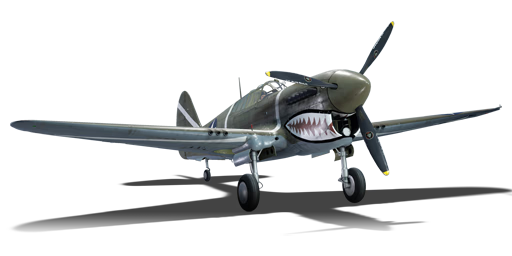



The Allison engine found in many P-40 variants severely limited the Warhawks' capabilities. It lacked a supercharger gear for high-altitude performance and was overall lacklustre compared to other engines. To remedy that, a P-40D was fitted with a Merlin engine in 1941. It produced around 1,300 hp and would later lead to the P-40F. The P-40F was largely the same as the previous variant but the Packard-built Merlin engine immensely increased the Warhawk's capability. It was better suited at high altitudes, the range was far better, and overall performance was increased. Over 1,300 P-40Fs were built and some were exported to the Royal Air Force.
The P-40F-10 was introduced in Update 1.79 "Project X". The new Packard-built Merlin engine greatly increases the Warhawk's ability to fight at higher altitudes. It still retains many of the same elements as the previous Warhawk variants. There are two ways to visually distinguish a P-40F from other variants: the P-40F lacks the upper air intake found on Allison-powered Warhawks and the fuselage was lengthened to accommodate the extra torque produced by the Merlin engine. Overall, the P-40F is a general improvement to the Warhawk family.
flaps
flaps
flaps
brake
| Belt | Belt filling | Armor penetration (mm) at a distance: | |||||
|---|---|---|---|---|---|---|---|
| 10 m | 100 m | 500 m | 1000 m | 1500 m | 2000 m | ||
| T/Ball/I/AP | 30 | 27 | 20 | 13 | 9 | 6 | |
| AP/AP/AP/T/I | 30 | 27 | 20 | 13 | 9 | 6 | |
| T/AP/AP/AP | 30 | 27 | 20 | 13 | 9 | 6 | |
| T/T/T/AP | 30 | 27 | 20 | 13 | 9 | 6 | |
| AP/I/AP | 30 | 27 | 20 | 13 | 9 | 6 | |
2 × 100 lb AN-M30A1 bomb












Flight performance | |
|---|---|
Survivability |
|---|
Weaponry | |
|---|---|